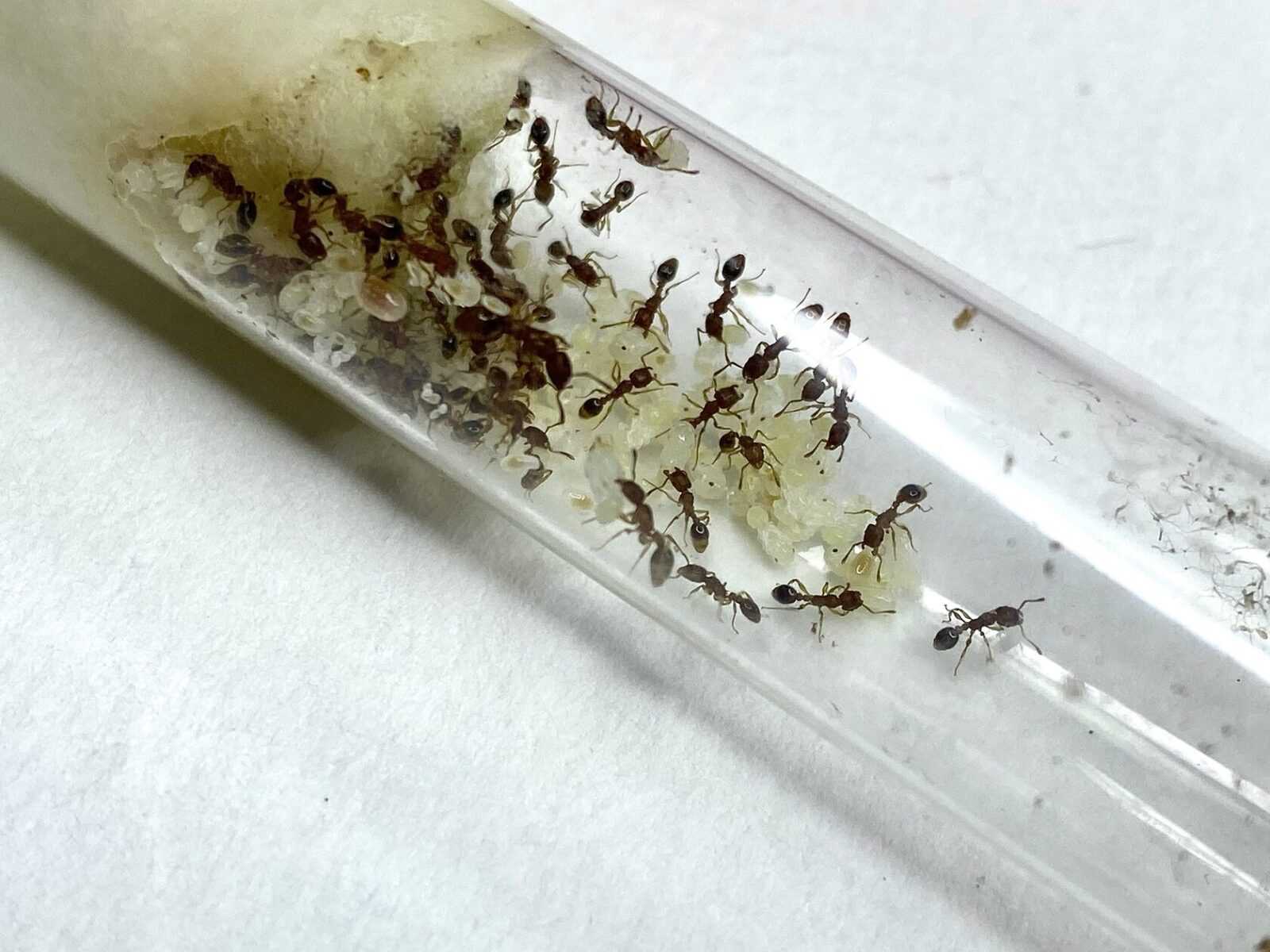Tetramorium bicarinatum: The Reddish-Brown Ant
Welcome to the world of Tetramorium bicarinatum, a fascinating ant species known for its remarkable characteristics and behavior. In this detailed product description, we will explore the various aspects of these ants, including their colony type, size, development rate, nutrition preferences, and recommended habitats for breeding.
Colony Type and Size
Tetramorium bicarinatum belongs to the polygyny colony type, which means that they have multiple queens within their colonies. This social structure allows for increased cooperation and division of labor among the ants. The size of these colonies can range up to an impressive 50,000 workers. With such a vast number of individuals, these ants can create intricate networks that function efficiently.
Size and Color
- Queen size: 4.2-4.6mm
- Worker size: 3-4mm
- Coloration: reddish-brown
The queen ants of Tetramorium bicarinatum measure between 4.2-4.6mm in size, while the workers are slightly smaller at 3-4mm. The distinguishing feature of these ants is their *beautiful* reddish-brown color. Their *heads* and *breasts* range from yellowish-orange to orange-brown, while their bellies always appear darker, with a brown-black hue.
Nutrition Preferences
When it comes to feeding Tetramorium bicarinatum, a varied diet is essential for their overall health and development. These ants primarily feed on *food insects* such as cockroaches and crickets, which provide them with the necessary proteins and nutrients. In addition to live prey, they also enjoy *syrup* made from a mixture of water and honey. The recommended ratio for this syrup is 4 parts water to 1 part honey. Furthermore, they find nourishment in *fruits*, *vegetables*, *jelly*, and *cooked chicken* without salt.
Arena Humidity and Temperature
Creating the perfect environment for your Tetramorium bicarinatum is crucial for their well-being. Maintaining the right levels of humidity and temperature is essential for their overall health and activity. In the arena, it is recommended to keep the humidity between *30-50%*, which replicates their natural habitat. For nests, a slightly higher humidity of *50-70%* is advised. In terms of temperature, the ideal range for the arena is *22-28 °C*, while nests should be kept at a slightly lower range of *20-24 °C*.
Features of the Species
Tetramorium bicarinatum boasts several intriguing features that set them apart from other ant species. These ants are incredibly *cautious* and *secretive* in their behavior. When faced with danger, they *withdraw* rather than panic, ensuring their safety and that of their colony. Their ability to assess threats and react accordingly showcases their remarkable resilience and adaptability.
Recommended Nests for Breeding
For successful breeding and keeping of Tetramorium bicarinatum, it is essential to provide them with suitable nest options. Various materials can effectively serve as nests for these ants, including *acrylic*, *cork*, *plaster*, and *aerated concrete*. These materials offer the necessary comfort and climate control to replicate their natural habitat and ensure their well-being.
Overall, Tetramorium bicarinatum ants are captivating creatures that provide a unique insight into the world of ants. With their polygyny colony type, striking coloration, diverse diet, and fascinating behavior, these ants offer endless opportunities for observation and study. By providing them with the right conditions and suitable nesting options, you can embark on an exciting journey into the captivating world of Tetramorium bicarinatum.

















Reviews
There are no reviews yet.